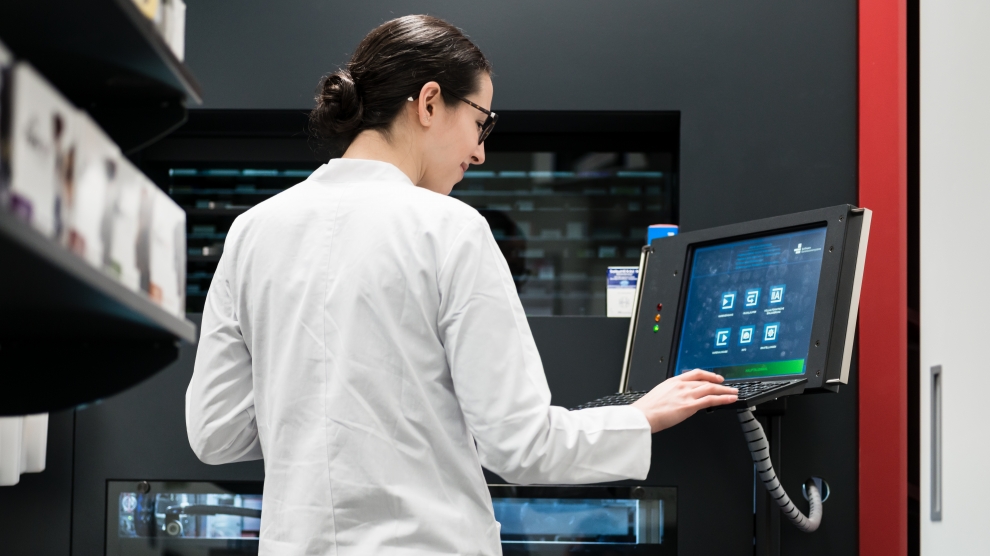There is no shortage of healthcare innovation coming out of emerging Europe at the moment, with start-ups creating a wide array of innovative products that have a high potential to help people across the globe.
But the road from idea to a truly innovative solution is often fraught with challenges and difficulty. In order for a new idea to become marketable, start-ups need to navigate a complex terrain of outcome visioning and commercialisation. This is where specialist organisations like EIT Health can help, by teaching start-up founders how to evaluate their products and how to go to market them properly.
A set of methodologies and skills known as early health technology assessment (eHTA) offers start-ups a multidisciplinary approach to evaluating the social, economic, organisational and ethical issues of a health intervention or health technology.
This kind of approach is especially important in the early stages of a healthtech start-ups development, when the potential for mistakes is high and when promising products can quickly become market failures.
“Many early stage healthtech firms are founded by academics and medical professionals, but in commercialising a product or service it requires a vast array of diverse skills. Early stage ventures must clearly demonstrate that they have the skillsets and access to the right talent to take an idea out of the laboratory and scale it in the real world,” says Russ Shaw, the founder of Global Tech Advocates and the co-founder of London Tech Week.
But what does this mean for the start-ups themselves? And how can eHTA help them make better decisions? Dr Tamás Bábel, medical and market access manager of EIT Health InnoStars, explains.
“Basically, you will be able to quantify the value proposition of your invention in terms of pricing,” he tells Emerging Europe.
Many start-ups neglect to think of commercialisation from the get-go. This leaves them in a position of not being properly able to determine the value proposition, the benefit for end users, of their inventions.
“Many start-ups fail because they are not aware of the expectations of their customers,” says Zoltán Kaló, professor of health economics at the Semmelweis University in Budapest.
“They have no appropriate business model, so they develop their products without having any understanding of how to do commercialisation.”
He goes on to explain that many start-ups have burnt money this way by focusing strictly on product development while neglecting the business side.
And according to Marius Russ, the CEO of Tully, a start-up developing medical devices for children with ADHD, the business side is equally as important as the technology.
“Unless you can transform a great product into a business, it’s very unlikely that you’ll be able to do anything with it,” he said in a recent episode of the EIT Healthcare Hackers podcast.
eHTA methodologies are developed not just with start-ups in mind, but also other stakeholders such as investors. In a world with limited resources, eHTA measurements can help stakeholders in the healthtech ecosystem make the best possible decision and focus on those companies and products that are most likely to become integrated within the healthcare system and achieve a return on investment.
Another role of eHTA is in making healthtech investment less risky and offering start-ups a clearer overview of what they need to do in order to grow and attract investment.
“Currently we don’t know how many investment projects fail just because they don’t understand the business aspect,” says Professor Kaló.
One of the systems used for eHTA is the CIMIT (Consortia for Improving Medicine with Innovation and Technology) Healthtech Innovation Cycle, which maps the journey from identifying an unmet need in the market to developing a solution which becomes standard care – a road along which many start-ups make mistakes.
The Healthtech Innovation Cycle divides an innovation’s lifecycle into 10 distinct stages, allowing companies and stakeholders to have a firmer grasp on the status of their innovation at any time. This also enables companies to learn from experiences of others. And it can be used as a complement to other methodologies.
“The combination of CIMIT and outcome visioning of the eHTA is the best way to manage the start-up from the beginning. They are not competitive with each other, they are complementing each other,” says Dr Bábel.
When these methods are used properly, they significantly de-risk the entire process of bringing an innovation to market. Professor Kaló notes, however, that the specific system used is less important than keeping with the basic principles of the methodology.
“The most important thing is to understand the expectations of your customer in terms of unmet need and in terms of pricing and financing. If you don’t understand that you won’t be successful, even with the best product,” he warns.
Pricing is an especially tricky area for new innovations, and one with, according to experts, the most potential for error. Simply put, an incorrectly priced device or service will not be successful on the market if it’s too expensive. And on the other hand, a product priced too low leaves money on the table and doesn’t give enough ROI to investors.
How can start-ups avoid making this mistake? By ditching the cost plus pricing strategy. Cost plus is a pricing strategy where a desired markup is added to the cost of developing and manufacturing a product. It’s the simplest, and one of the most commonly used strategies across many branches of industry. But it is also the pricing strategy that is most likely going to result with an incorrectly priced offering.
“The problem with cost plus pricing is that you do not understand your external environment, you do not understand how your competitors behave in terms of their pricing strategy and what is the expectation of your customers,” says Professor Kaló. “Cost plus pricing is a typical problem of ignorance.”
Instead, start-ups should look towards more comprehensive ways of determining prices, such as the headroom method. This method, first coined as such in 2007, is suggested as a part of early stage evaluation for the HTA process. It starts with a calculation of the avoided healthcare costs and expected health gain which can be expressed through Quality-Adjusted Life Years (QALYs). It’s a measurement that combines survival benefit or increased life expectancy with improvements in health-related quality of life.
The headroom method can therefore be used to calculate the maximum reimbursable price for a medical device that can be justified through an incremental cost per QALY ratio. This also helps stakeholders judge the viability of the innovation.
“There is a study that says that if your headroom is positive then the chance that your new technology will be adopted is higher than 80 per cent. So I think this is very powerful message to everyone: it pays to invest in eHTA,” explains Dr Bábel.
And it doesn’t pay for just start-ups, but for other stakeholders as well. Accelerators, universities, and investors, can use eHTA to determine which new ideas actually have a shot of making it to market and succeeding.
“We have a limited amount of resources to help start-ups grow,” says Dr Bábel. “I want to see a future where all stakeholders are looking at eHTA in their investment or other decisions. This is going to be common language in our community about how to move forward.”
A question remains, however, of whether start-ups and stakeholders in the healthcare innovation ecosystem, especially in Central and Eastern Europe, truly grasp how important eHTA is. According to some experts, it’s still early days for eHTA in the region, but there is a growing awareness of its importance, and stakeholders such as venture capitalists are becoming interested in the benefits it can bring.
Umbrella organisations like EIT Health play an extremely significant role in the uptake of the educating to the broader healthtech ecosystem community about eHTA.
“I don’t think this is just for start-ups, we have to put as much force as we can to have people acquire this skill set,” says Dr Bábel. This is why EIT Health has held webinars to explain the benefits of eHTA to the different stakeholders. The main lesson for researchers and start-ups could be that innovative ideas on their own are not enough. User expectations, pricing, and integration within the healthcare system all must be taken into account if the product is to have market success.
“Our technology mindset and our innovative ideas are sometimes not aligned with what end users need the most,” says Joana Silva, biomedical researcher at Fraunhofer Portugal AICOS and manager of the FRADE Project, a platform for fall-risk assessment for the elderly, during an episode of the Healthcare Hackers podcast.
“Without user acceptance and the defined need of the technology our product could be a very innovative solution, but not useful for them in the end.”
Eduard Marone, CEO of DocuMental, a healthcare platform that helps psychiatrists diagnose and track mental issues, and another Healthcare Hackers guest, confirms this view and notes that start-ups “must be able to demonstrate the value and the benefit of their inventions. [As a start-up] you need to listen to what experts from EIT Health are telling you because you are probably focused on a scientific idea and you are missing an important part in that big picture.”
With EIT Health now engaged in educating the healthtech community in the importance of eHTA, it’s likely that many start-ups will be able to do just that: offer innovative, much-needed solutions that benefit all stakeholders.
—
Unlike many news and information platforms, Emerging Europe is free to read, and always will be. There is no paywall here. We are independent, not affiliated with nor representing any political party or business organisation. We want the very best for emerging Europe, nothing more, nothing less. Your support will help us continue to spread the word about this amazing region.
You can contribute here. Thank you.







Add Comment